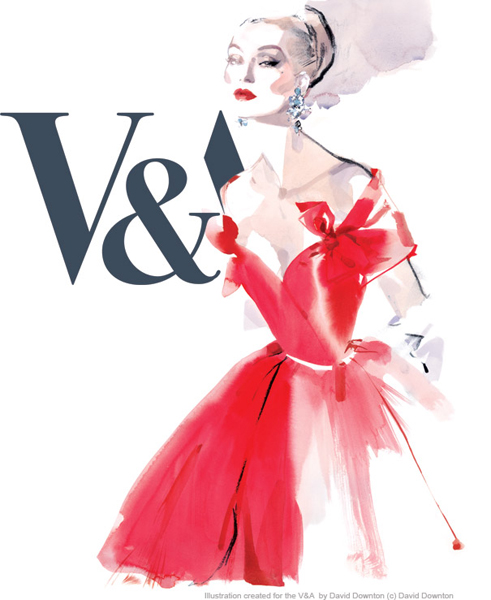
Our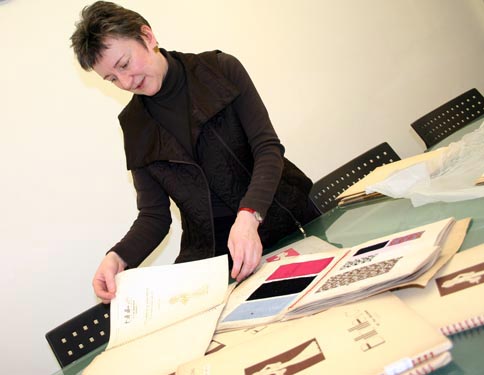 Textile Archive proved a rich seam of research material for a major exhibition at the Victoria & Albert Museum. Lesley Miller, Senior Curator for Textiles at the V&A visited us in February 2007 to explore our amazing resources and select items to exhibit in preparation for The Golden Age of Couture, 1947 to 1957, and for a paper she was preparing about the dissemination of couture for the V&A’s conference, Couture Tales held that November. On her visit she offered experts insights into why our trends prediction collection is so significant.
Textile Archive proved a rich seam of research material for a major exhibition at the Victoria & Albert Museum. Lesley Miller, Senior Curator for Textiles at the V&A visited us in February 2007 to explore our amazing resources and select items to exhibit in preparation for The Golden Age of Couture, 1947 to 1957, and for a paper she was preparing about the dissemination of couture for the V&A’s conference, Couture Tales held that November. On her visit she offered experts insights into why our trends prediction collection is so significant.
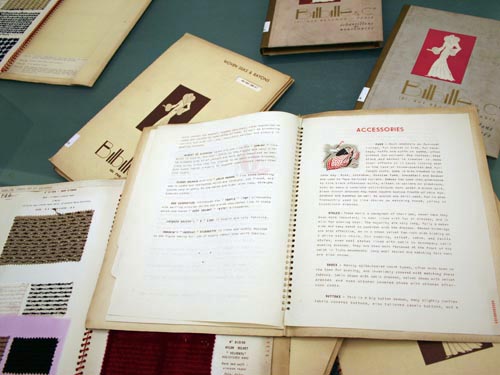 Lesley explained “I am exploring Bilbille, a Parisian textile sampling house who predicted trends in textiles. Hind Robinson of Bradford subscribed to the books put together between 1949 and 1959 and they have been saved in the Textile Archive. The house produced 17 volumes containing textile samples each year. They are invaluable if we want to explore textiles for couture because photographs of fabrics don’t give any sense of the nature or drape of fabric. Here we have actual samples ranging from the more mundane to the elaborate and we can see the colours and texture. Some pages show the exact colours chosen by leading designers including Dior and Givenchy and sometimes the books contain photographs of social events at which women wore garments made of the same fabrics (at the races or at the theatre, for example). The composition of the fabrics is noted so we can also see that the couturiers were using both natural fibres and some of the new mixes of synthetics such as rayon and nylon.”
Lesley explained “I am exploring Bilbille, a Parisian textile sampling house who predicted trends in textiles. Hind Robinson of Bradford subscribed to the books put together between 1949 and 1959 and they have been saved in the Textile Archive. The house produced 17 volumes containing textile samples each year. They are invaluable if we want to explore textiles for couture because photographs of fabrics don’t give any sense of the nature or drape of fabric. Here we have actual samples ranging from the more mundane to the elaborate and we can see the colours and texture. Some pages show the exact colours chosen by leading designers including Dior and Givenchy and sometimes the books contain photographs of social events at which women wore garments made of the same fabrics (at the races or at the theatre, for example). The composition of the fabrics is noted so we can also see that the couturiers were using both natural fibres and some of the new mixes of synthetics such as rayon and nylon.”
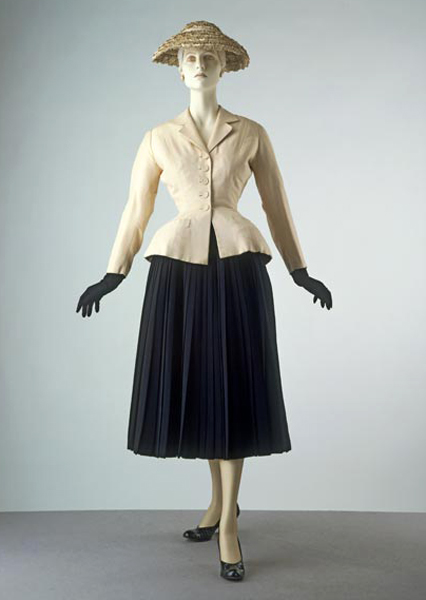 Lesley continued, “During the war in both Britain and France there were shortages of good quality fabrics and only in the early 1950s did supplies become more readily available. This probably explains why Bilbille did not resume activity until after 1949, although it had been in business since the 1880s. We are fortunate that a textile manufacturer named Hind Robinson took out a subscription for these books, wanting to know what to produce and what would be fashionable at different levels of the market. The firm no doubt believed that knowing the couture trends in Paris would help them. A fascinating addition to the textile samples from 1952 onwards are comments from a British critic who worked for Courtaulds User-Development department. He commented on the samples chosen by the French in a knowledgeable and sometimes disparaging manner, noting what was ‘couture quality’ and what definitely was not. We are fortunate that the books were saved as these volumes reveal a hidden history of this exciting period.”
Lesley continued, “During the war in both Britain and France there were shortages of good quality fabrics and only in the early 1950s did supplies become more readily available. This probably explains why Bilbille did not resume activity until after 1949, although it had been in business since the 1880s. We are fortunate that a textile manufacturer named Hind Robinson took out a subscription for these books, wanting to know what to produce and what would be fashionable at different levels of the market. The firm no doubt believed that knowing the couture trends in Paris would help them. A fascinating addition to the textile samples from 1952 onwards are comments from a British critic who worked for Courtaulds User-Development department. He commented on the samples chosen by the French in a knowledgeable and sometimes disparaging manner, noting what was ‘couture quality’ and what definitely was not. We are fortunate that the books were saved as these volumes reveal a hidden history of this exciting period.”
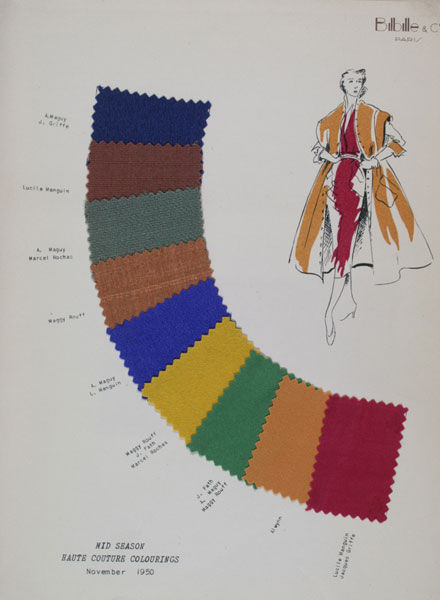 Lesley concluded, “Vogue produced a textile issue twice each year for fashionable consumers but the Bilbille volumes offer a slightly different insight as they were produced for the trade. These intermediaries played a key role in the dissemination of Paris fashion. Wearing haute couture, made to measure was the preserve of the elite but these styles were disseminated via retailers and wholesalers who bought models to reproduce, sometimes in textiles from the same manufacturers. The knock-on effect was important for mill workers here in the North of England and elsewhere as they made the textiles. Many textile historians will not be aware of this fantastic resource which discloses the nitty-gritty tools of the trade. The V&A’s exhibition will encourage interest in 1950s design which is already in vogue due to sales of vintage clothing at auctions, in shops and on the internet. It is wonderful that here in Bradford students can see the stage before the dresses. There is so much that is inspiring.”
Lesley concluded, “Vogue produced a textile issue twice each year for fashionable consumers but the Bilbille volumes offer a slightly different insight as they were produced for the trade. These intermediaries played a key role in the dissemination of Paris fashion. Wearing haute couture, made to measure was the preserve of the elite but these styles were disseminated via retailers and wholesalers who bought models to reproduce, sometimes in textiles from the same manufacturers. The knock-on effect was important for mill workers here in the North of England and elsewhere as they made the textiles. Many textile historians will not be aware of this fantastic resource which discloses the nitty-gritty tools of the trade. The V&A’s exhibition will encourage interest in 1950s design which is already in vogue due to sales of vintage clothing at auctions, in shops and on the internet. It is wonderful that here in Bradford students can see the stage before the dresses. There is so much that is inspiring.”
The Golden Age of Couture Exhibition ran from 22 September 2007 until 6 January 2008, before touring internationally. You can read much more about it here